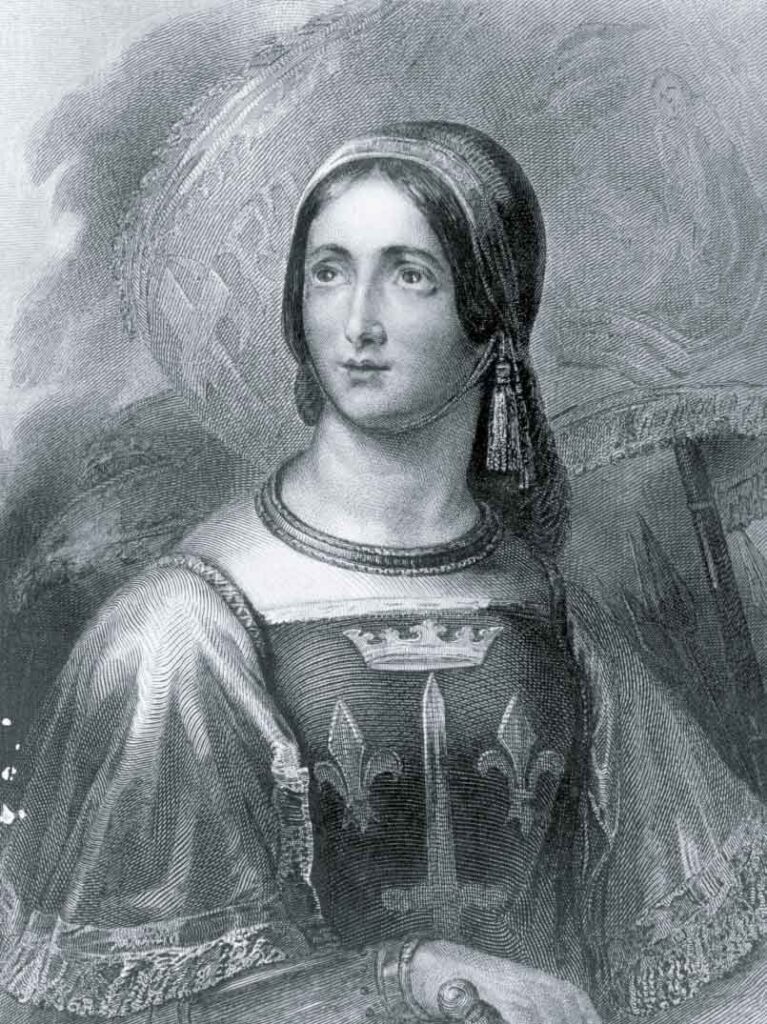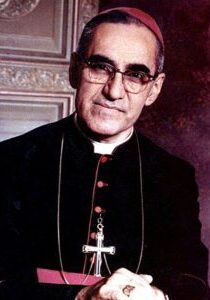Joan of Arc
January 6, 1412 - May 30, 1431
French Soldier
French Soldier
From Domrémy, France
Served in Rouen, Normandy
Affiliation: Catholic
"If I am not in the state of grace, may God put me there; and if I am, may God so keep me."
There are few figures from the Middle Ages, male or female, more well-represented in the historical record than Joan of Arc. Her life, though short, was so extraordinary that she continues to be held in high esteem, is the object of continued research and study in academia, is the patron saint of France, and remains an enduring figure in art and film. She is most notable for her incredible passion and faith in God, as well as her unwavering devotion to what she believed to be her ultimate calling from God, to play a part in the dispute between France and England in the Hundred Years’ War.
In order to properly understand Joan’s indelible role in the Hundred Years’ War, it is important to first look at her upbringing in Domremy, a village in the northeastern part of France, around the year 1412. She was one of five children born to Jacques d’Arc and Isabelle Romée. Like other young girls in her village, she received some education and was taught domestic skills while helping on her family’s farm. Most importantly, she was raised with a deep devotion to the Catholic faith.
There are many accounts from those who knew Joan as a child in Domremy, and she was described similarly in all of them. One childhood playmate, speaking years later said, “I was brought up with Joan the Maid, next door to her father’s house. I know that she was good, simple, pious, fearing God and his saints; she went often and of her own will to church and to sacred places, caring for the sick and giving alms to the poor…”1 In fact, she was seen so often going to church that she was teased by some in her village for her extreme piety.2 Another account came from an uncle by marriage, Durand Luxart. He stated, “Joan was of good behavior, devout, patient, going readily to church, willingly to confession, and gave alms to the poor when she could…”3 These, and many other eyewitness accounts, testify to her devotion to God at an early age and lay the foundation for the path she would take in her teenage years.
The backdrop of Joan’s life was the Hundred Years’ War. The Hundred Years’ War was a time of unrest in Europe, specifically England and France, beginning in 1337. Stemming from a claim to the French throne made by the English King Edward II, this initial claim would lead to conflict between three generations of monarchs. Though there was not constant warfare, skirmishes continued between the different factions until the end of the war in 1453. During this time, Joan’s village of Domremy, though located in France and known to be loyal to the French crown, was under English control. The English monarch was Henry VI, and the French monarch was Charles VII, the Dauphin of France. Joan was willing to fight, ultimately to the death, to have Charles VII placed on the throne and settle this conflict between England and France once and for all.
In 1425, around age thirteen, Joan’s conviction and determination to see the Dauphin crowned at Reims Cathedral and take the throne as Charles VII was born when she had her first vision. These visions began as a voice speaking to her. She later identified those who spoke to her as Saint Michael the Archangel, Saint Catherine, and Saint Margaret. These visions continued until the time of her death. It was through these visions that she was instructed to aid the Dauphin, Charles VII, in wresting control from the English. Her charge was to join the French military campaign and lead an army to break the long-standing English siege at Orléans.
In 1429, Joan met with the Dauphin in an attempt to convince him that she was sent by God to help him in this conflict with the English. Upon meeting him, Joan stated, “Gentle Dauphin, Joan the maid is my name and to you is sent word by me from the King of Heaven that you will be anointed and crowned in the town of Reims and you will be Lieutenant to the King of Heaven who is King of France.”4 At first, Charles was unconvinced that this young girl from a small village was divinely sent to aid him, but he eventually agreed to send her to Poitiers to be questioned by Catholic clergy and theologians. For three weeks, she confidently answered questions regarding her visions and her mission. It was decided that she was not a spy for England, and she was given a small army to lead to Orléans.
It was in Orléans that Joan’s status and reputation was established. The siege of Orléans began in 1428, ninety-one years into the Hundred Years’ War. This city was strategically located between English controlled northern France and those loyal to Charles VII in the south. Joan was only involved in the siege for nine days, but she played a crucial role in ending this months’ long attack. Though she was vital in raising French morale, she was also involved in discussions of military strategy and pushed for direct assault on English forces. Even as a young woman, Joan held authority and influence among French soldiers. On May 7, 1429, the final blow against the English was made, and Orléans returned to French control. Joan rode across the drawbridge to the city on a white horse, bringing supplies to the citizens and stating, “The Lord has sent me to succor this good town of Orléans. Hope in god. If you have good hope and faith in him, you shall be delivered from your enemies.”5 Joan had proven herself and her commitment to the French cause. She was well on her way to fulfilling her mission to see Charles VII finally crowned at Reims.
After Joan’s military successes at Orléans and other towns, the French army was largely able to progress towards Reims without any delay or hindrance. On July 17, 1429, Joan’s vision was realized and her mission fulfilled when Charles VII was crowned. Joan was present for the coronation. She “stood by dressed in her armor, draped with a white silk tunic, her banner held high.”6 The coronation in the traditional location of Reims was vital to proving to the French people that Charles VII, not Henry VI of England, was the true king of France. Joan’s presence at the coronation was viewed as one more sign that Charles VII, whom Joan had received messages from God regarding his divine right to rule, was placed on the throne by God himself.
The role Joan played in strengthening French morale in the Hundred Years’ War, as well as her influence over the newly crowned French king, made her a continued target for the English. In September of 1429, Joan set her sights on Paris, hoping to continue France’s offensive and return the capital city to French control. Unlike towns Joan passed through on the way to Orléans and Reims, Paris did not welcome Joan or the French into the city. After failing to take Paris, Joan’s army was disbanded, and she became more of a courtier in the French court that a military commander. However, on May 23, 1430, she was given a small contingent to push back the Burgundians troops from Compiegne to Margny. When English reinforcements arrived to aid the Burgundians, French commanders ordered a retreat. Joan refused to turn back and was captured by the Burgundians.
The Burgundians and English were not fond of Joan. They blamed her for the war turning in France’s favor after her success at Orléans. They also viewed her as a heretic and possibly a witch. Her capture by the Burgundians was a huge boon, but devastating to the French who had come to view her as a symbol of divine favor for their country and their cause in the war. In November of 1430, the Burgundians transferred custody of Joan to the English for a ransom of ten thousand francs.7 Joan was imprisoned and awaited trial in Rouen, Normandy.
Joan’s darkest days were those of her imprisonment; yet they were also the days that revealed her unwavering faith in God. The account of her trial is one of the best records remaining of legal proceedings from the medieval period. The process of the trial was unfair from the start. She was interrogated for months leading up to the trial by trained lawyers, clergy, and academics—and all were her enemy. These were not unbiased interrogators. Their goal was to manipulate her into recounting her reported visions and tightly held beliefs. She was largely isolated, given no female companions, and questioned repeatedly. A key method used to gain information from Joan was to offer her the protection of confession with a priest, but then use what she said against her later. Though men of religious position interrogated her, the real goal was a political one. The French had come to believe her visions and her words that said France was divinely favored by God in the conflict of the Hundred Years’ War. The English had to discount and discredit her. If she could be discredited and seen as a heretic, even the coronation of the French king, Charles VII, would be questioned.
The interrogations lasted from January to May 1431. Joan was questioned on a variety of subjects, including complex theological questions and ones intended to trick her into saying something that was self-incriminating. However, even under the threat of torture, Joan was composed and stayed true to her account. She showed incredible faith in God and confidence in the calling He had placed on her life. She was outrageously brave, bold, and determined in a way that shocked those charged with questioning her. The trial that intended to break and discount her actually did the opposite.
On May 30, 1431 Joan was found guilty of heresy. After receiving final confession and communion, she was led to the pyre. Though distraught, “with her last breath, she cried out to Jesus before succumbing to the fire. Until the end, she maintained that her visions and voices were divine in nature and affirmed her piety and faith in the Catholic Church.”8 The English, who hoped to end Joan’s influence and ruin her reputation, in fact, created a legend.
Twenty years after her death, efforts to clear her name began in earnest, led by both her mother, Isabelle Romée and Charles VII, among others. Finally in 1455, the appeal for a new trial was granted. After gathering extensive testimonies about Joan regarding her reputation, piety, and commitment to her faith, the verdict from the original trial was eventually overturned citing bias and procedural errors. Now, Joan was officially declared a martyr, suffering and dying for her faith. Almost five hundred years later, in 1920, she was canonized as a saint by the Catholic Church.
Joan was only nineteen years old when she died. That a teenage girl from a small medieval village is still so well known today is astounding. But Joan was not an ordinary teenage girl. She was bold, convicted, inspired, determined, and dedicated. She devoted her life to living out her faith, not for praise, fame, or status, but because she loved God and was wholly devoted to answering the call placed on her life to give aid to the French forces and see Charles VII crowned. Joan succeeded in her mission and kept the faith. Even when facing adversity, she did not waver in her faith. Joan chose faith over fear, safety, or rest. She kept the faith while struggling to prove herself on the battlefield, when fighting to lead the king to his coronation, and when realizing the king would not spare her from a brutal execution. God proved faithful to this young girl who would, in nineteen short years, change the world she lived in and be remembered for centuries to come.
Notes
1 Régine Pernoud. Joan of Arc: By Herself And Her Witnesses. Scarborough House: Lanham, MD, 1994, page 17.
2 Ibid.
3 Ibid.
4 Ibid, 52.
5 Billy Wellman, Joan of Arc: An Enthralling Guide to a Peasant Girl’s Rise in Medieval France and Her Timeless Legacy as a National Heroine. Middletown, DE, 2024, page 29.
6 Ibid, 33.
7 Wellman, 40.
8 Wellman, 52.
Bibliography
- Meltzer, Françoise. “Joan of Arc in America.” SubStance 32, no. 1 (2003): 90–99.
- Pernoud, Régine. Joan of Arc: By Herself and Her Witnesses. New York: Scarborough House, 1982.
- Wellman, Billy. Joan of Arc: An Enthralling Guide to a Peasant Girl’s Rise in Medieval France and Her Timeless Legacy as a National Heroine. United States, 2025.
- Wrenn, Andrew. “Making Learning Drive Assessment: Joan of Arc — Saint, Witch or Warrior?” Teaching History, no. 115 (2004): 44–51.




